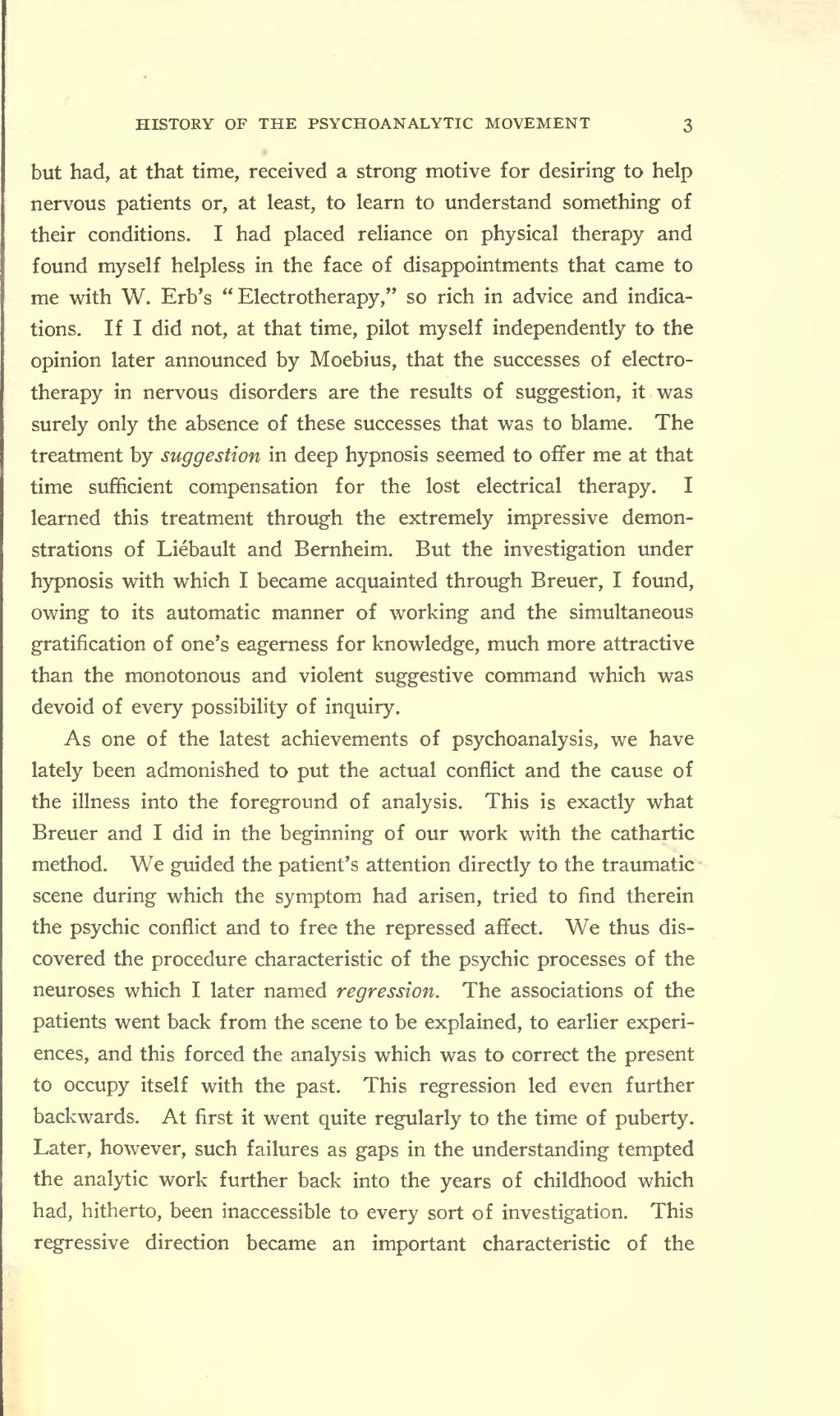but had, at that time, received a strong motive for desiring to help nervous patients or, at least, to learn to understand something of their conditions. I had placed reliance on physical therapy and found myself helpless in the face of disappointments that came to me with W. Erbs "Electrotherapy," so rich in advice and indications. If I did not, at that time, pilot myself independently to the opinion later announced by Moebius, that the successes of electrotherapy in nervous disorders are the results of suggestion, it was surely only the absence of these successes that was to blame. The treatment by suggestion in deep hypnosis seemed to offer me at that time sufficient compensation for the lost electrical therapy. I learned this treatment through the extremely impressive demonstrations of Liébault and Bernheim. But the investigation under hypnosis with which I became acquainted through Breuer, I found, owing to its automatic manner of working and the simultaneous gratification of ones eagerness for knowledge, much more attractive than the monotonous and violent suggestive command which was devoid of every possibility of inquiry.
As one of the latest achievements of psychoanalysis, we have lately been admonished to put the actual conflict and the cause of the illness into the foreground of analysis. This is exactly what Breuer and I did in the beginning of our work with the cathartic method. We guided the patients attention directly to the traumatic scene during which the symptom had arisen, tried to find therein the psychic conflict and to free the repressed affect. We thus discovered the procedure characteristic of the psychic processes of the neuroses which I later named regression. The associations of the patients went back from the scene to be explained, to earlier experiences, and this forced the analysis which was to correct the present to occupy itself with the past. This regression led even further backwards. At first it went quite regularly to the time of puberty. Later, however, such failures as gaps in the understanding tempted the analytic work further back into the years of childhood which had, hitherto, been inaccessible to every sort of investigation. This regressive direction became an important characteristic of the
